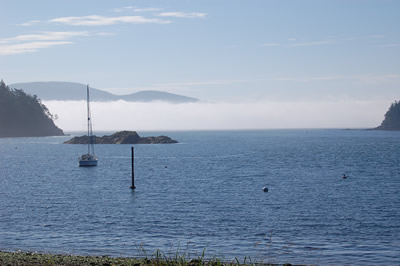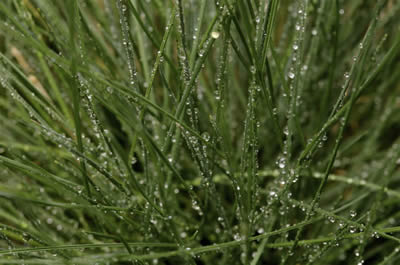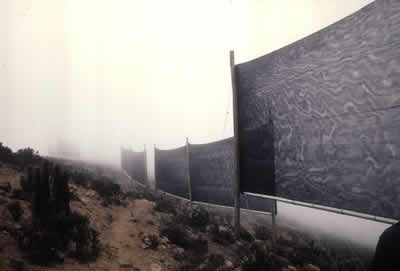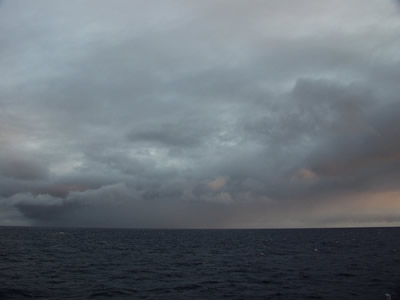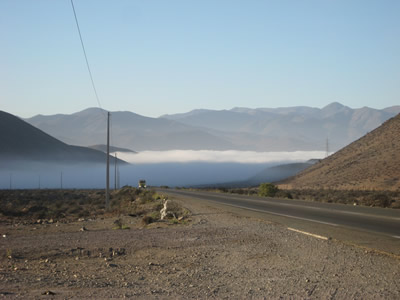Click on image for full size
Image Courtesy of Amy Hatheway
Fog
Fog is a ground-level cloud. There are several ways that fog forms. It usually forms when moist air travels over cold land or water. The moist air cools down and the water vapor condenses and forms a cloud near the Earth's surface. Over land, this usually happens on clear nights with calm winds. In this case, once the Sun comes up in the morning, it warms the fog layer and evaporates the water droplets contained within the layer. This is called ground fog. Fog doesn't normally occur when there are strong winds, because the winds mix drier air downward into the more moist air near the Earth's surface; this mixing often prevents fog formation from occurring.
Here are some other ways that fog can form:
- Valley fog: Fog forms in valleys during the winter when cool air flows down the sides of hills or mountains. During the day, the Sun isn't strong enough to evaporate the fog completely. This type of fog can last for days, until a storm brings enough wind to push out the cold air.
- Advection fog: This type of fog forms when moist air flows over cold ground or water. Once the water vapor in the air condenses, it forms fog. If sunlight is not strong enough to "burn off" the fog, advection fog can remain for many days.
- Precipitation fog: This type of fog forms when rain or snow falls into drier air below the cloud where they evaporate. This evaporation adds moisture to the air below the cloud. If this moist air is cooled then fog may form.
- Upslope fog: Upslope fog forms when winds blow up the side of a hill or mountain. This rising of the air results in its expansion and cooling and the water vapor in the air will condense to form fog. This type of fog is very common along large hills and mountains, including the plains east of the Rocky Mountains where the land slopes gently upward towards the mountains.
- Steam fog: Steam fog forms when cold air blows over warmer water. The water evaporates into the cold air and condenses to form fog. Steam fog often forms in the fall, because oceans and lakes are often warmer than the land at this time of year.


